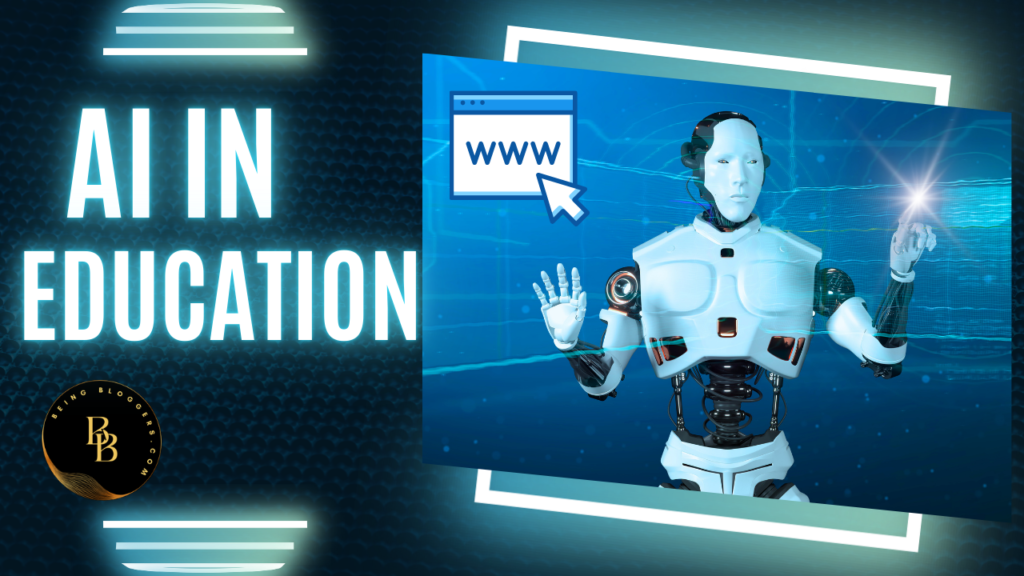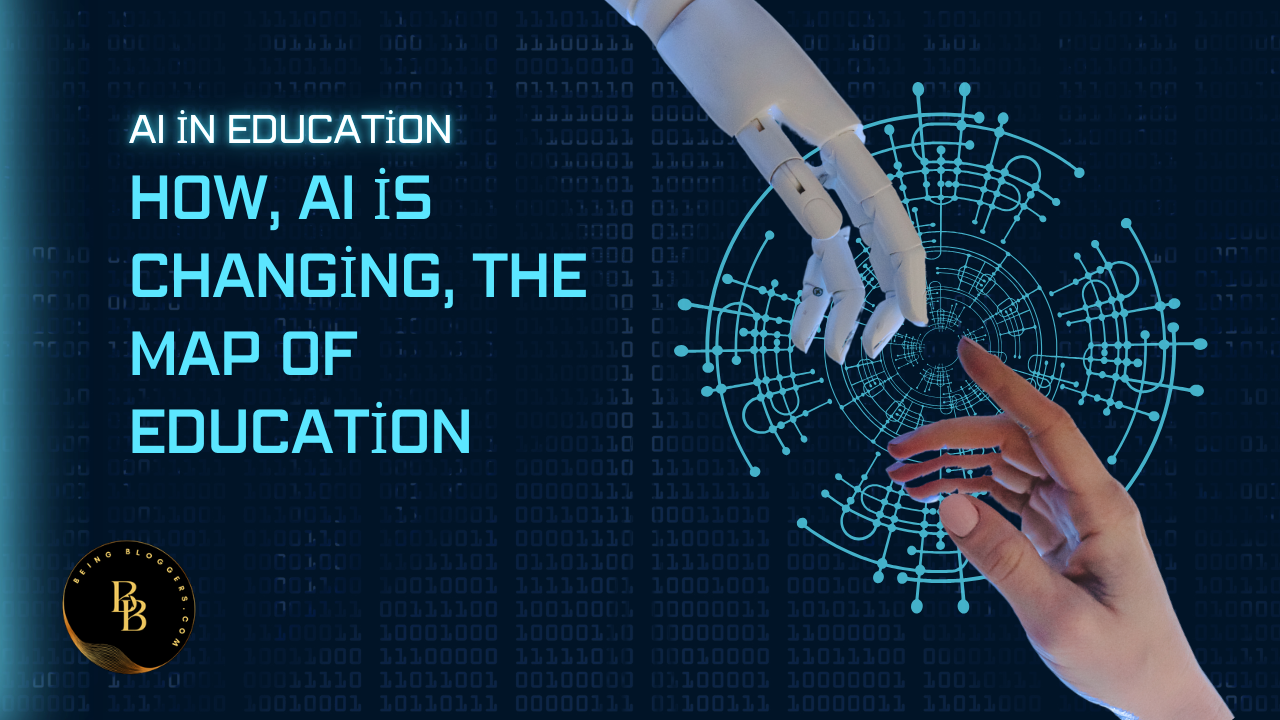The Revolution in Education Driven by AI
Artificial Intelligence is pervasive, from classrooms to online schooling. How AI is Modifying the Educational Environment.AI.It’s personalizing education. It improves the effectiveness of instruction. Let’s examine how AI is changing the educational landscape. Artificial Intelligence (AI) is changing the educational landscape. It is not an unbiased inclination. A revolution has occurred.
Tailored Education
How AI is Transforming the Educational Landscape: AI is making learning personalized for every student. by evaluating how they performed. It recognizes their requirements. By moving at their speed. This is an example of personalized learning in action:
Interactive tests
Personalized study schedules
instantaneous feedback
Suggestions for personalized content
Now, students are free to learn at their own pace. They can concentrate on what they really need. Better results follow from this. It also increases self-assurance.
Intelligent Educational Frameworks
AI-driven tutors have arrived. You can reach them at any time of day or night. It never gets old and adjusts to the demands of every pupil. These setups make use of:
Natural Language Interpretation
Robotic Learning
Information Analysis
They can respond to inquiries right away. It can clearly explain complicated subjects. They are even able to predict areas in which a pupil may struggle.
responsibilities in administration shortened
Teachers have a part of the job to do. AI is assisting in reducing workload. It is replacing regular tasks. As a result, educators have more time to educate. Here’s how to do it:
Computerized grading
tracking of attendance
Setting up help
Analytics of performance
As these duties are completed, educators can concentrate on what really matters: instructing.
Data-Determined Perspectives
AI is an effective tool for data analysis. It can quickly process enormous amounts of data. This provides educators with insightful information. They are able to:
Early detection of troubled students
Identify patterns in learning trends.
Determine how well a certain teaching strategy is.
Forecast the performance of students
Better decisions are made as a result of these insights. They advocate for the advancement of education as a whole.

Augmented and Virtual Reality
AI is managing engaging educational activities. The way we study is changing as a result of virtual and augmented reality. Students are able to:
Investigate historical societies
Examine virtual creatures in detail
Carry out mock experiments
Duty call distant locations denied access to the classroom
Learning becomes more interesting with these encounters. They facilitate understanding of difficult ideas.
Constant Improvement and Learning
Artificial intelligence systems are always learning. They never stop getting better. This implies:
Updates to the curriculum based on current research
Refined instructional strategies through data analysis
Continuous adjustment to evolving curriculum requirements
The nature of education has changed. It moves. Things are always improving
Worldwide Cooperation
AI is removing boundaries between locations. Globally, it is bringing together educators and students. This results in:
experiences of cross-cultural learning
International research partnerships
Various viewpoints in the classroom
cross-border exchange of excellent practices
Our environment is turning becoming a classroom. This is made possible via AI.
Obstacles and Things to Think About
Although AI has numerous advantages, it also has drawbacks. We have to think about:
Security and privacy of data
The disparity in digital
The necessity of interpersonal communication
AI in education: a moral application
These are matters that require cautious consideration. They require constant conversation.
AI’s Role in Education Future
The future appears promising. Artificial Intelligence will keep developing. It will open up new avenues. Perhaps we will observe:
curriculums created by AI
Recognizing emotions in virtual education
sophisticated predictive analytics to ensure academic achievement
AI-powered career advice
There is a lot of potential. With AI, the future of education is bright.
In summary
AI is significantly changing the nature of education.AI. It is improving the privacy, accessibility, and organization of knowledge.Chnaging. providing educators with fresh resources and perspectives. It is pushing the envelope and creating novel opportunities. Education is about to change, and artificial intelligence is driving it. Moving forward, we need to rationally suppress these variances. We need to certify that AI supports both teachers and students in their quest for optimal comfort.
Commonly Asked Questions
How does AI grade students’ education?
AI analyzes student performance data to personalize learning. It points forth advantages and disadvantages.Changing. The learning material and pace are then modified appropriately.AI. AI may design unique study schedules. It has the ability to suggest particular resources. It can even forecast potential problem areas for a pupil.
Can artificial intelligence teach in place of humans?
No, AI cannot replace human teachers completely. Although AI is a useful tool, it has limitations. Human teachers bring empathy, creativity, and critical thinking to the classroom. In a manner that AI cannot, they can uplift and motivate students. The ideal way to conceptualize AI is as an adjunct to human teachers, not as a substitute.
What potential challenges lie ahead for implementing AI in education?
Even while AI offers a lot of benefits, there might be drawbacks. Concerns about confidentiality are a serious issue. Large amounts of student data are collected and analyzed by AI systems. This calls into question the use and security of data. Additionally, there is a chance that the digital divide will grow. Without access to AI-powered resources, students risk falling behind. Furthermore, if AI is used too much in education, it may replace human interaction. This might affect the growth of social skills. Finally, concerns exist regarding the ethical application of AI in decision-making processes that impact students’ futures.
How can educators prepare for the coming AI revolution in the classroom?
Teachers may prepare students for the AI revolution in a variety of ways. They ought to become acquainted with AI technologies first.AI. They can use AI more successfully if they understand how it operates. Secondly, they need to focus on new services that AI can’t just copy. They include creative thinking, emotional intelligence, and risk-taking thinking. Third, educators need to be receptive to lifelong learning.


Good information good work
Lucid explanation
[…] biased AI systems have the potential to reinforce existing disparities and produce biased outcomes. Artificial intelligence may make biased decisions toward positive groups of people if it learns from incomplete facts. This […]
Pink Withney Hi there to all, for the reason that I am genuinely keen of reading this website’s post to be updated on a regular basis. It carries pleasant stuff.